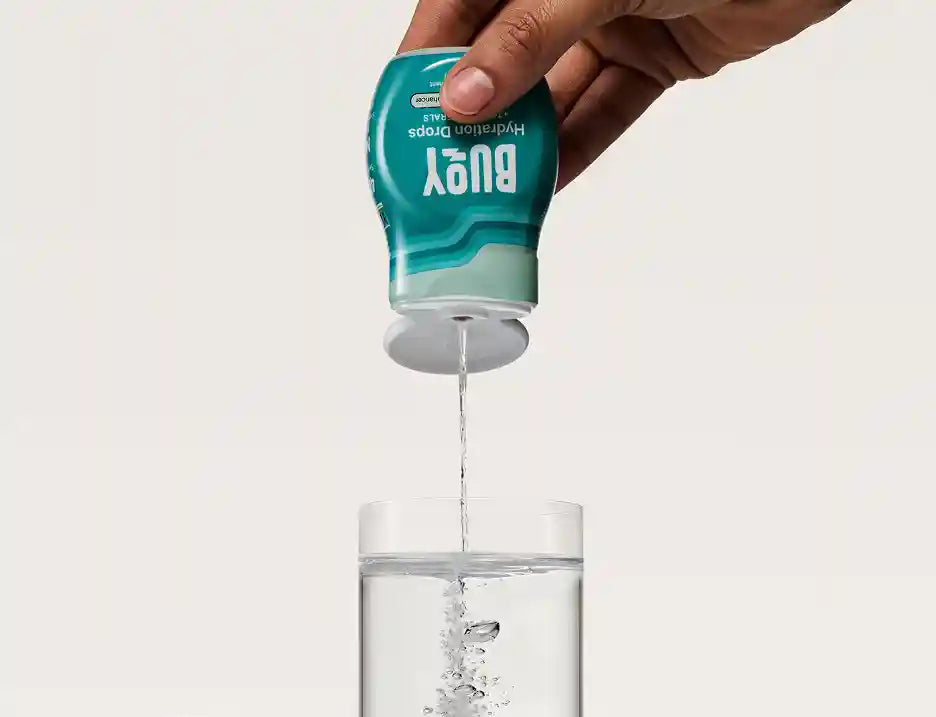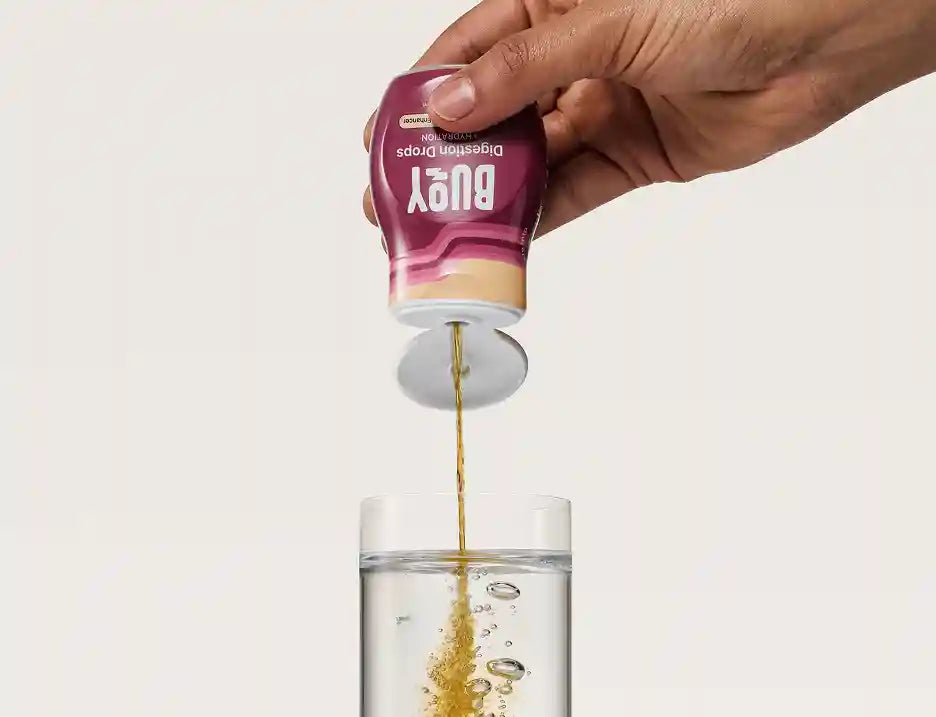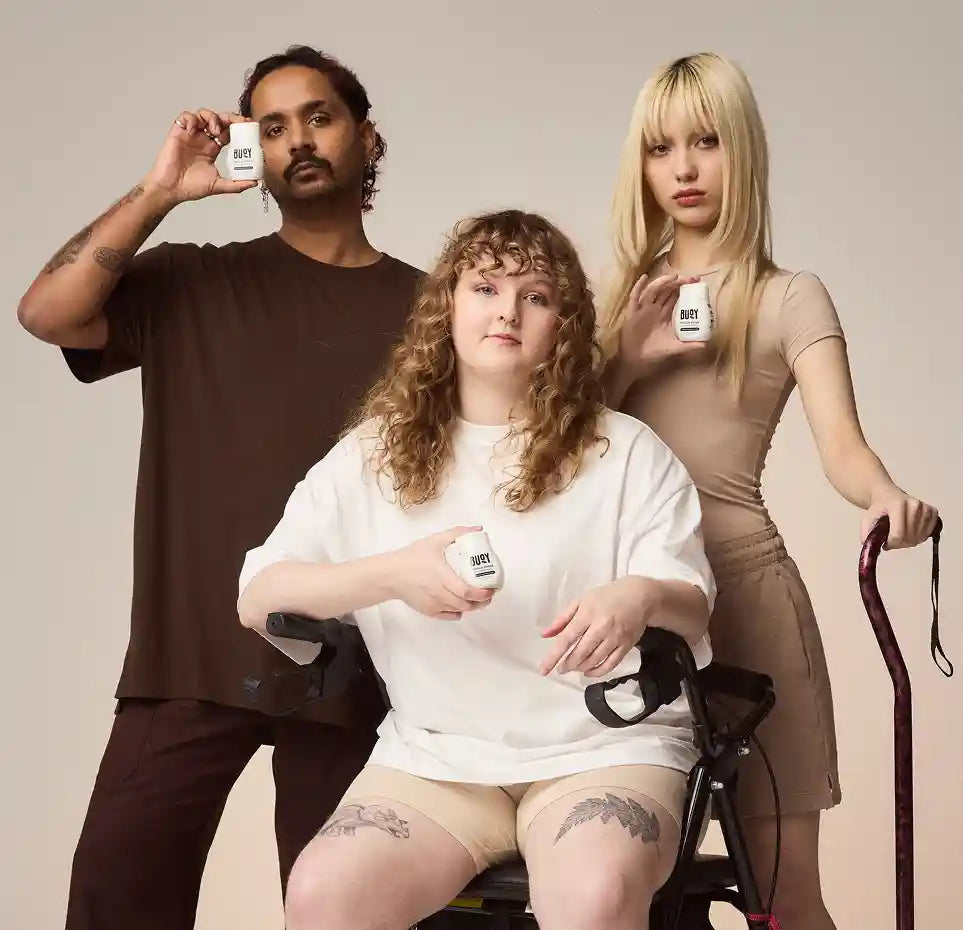
Advanced Treatments for POTS: Exploring Cutting-Edge Options
Do you ever feel like your POTS symptoms are running your life, no matter how hard you try to manage them? What if there were new treatments that could really make a difference, giving you back some control and improving your quality of life?
From cutting-edge medications and innovative non-drug therapies to high-tech gadgets that monitor your health, advanced treatments for POTS are evolving at a rapid pace. These aren’t just future possibilities – they’re happening right now.
Essential Takeaways:
- Personalized Treatment is Key: As our understanding of POTS grows, treatment options are becoming more individualized. Advanced therapies and diagnostic tools allow for more tailored treatment plans that address each patient’s unique symptoms and underlying causes.
- Technology is Revolutionizing POTS Management: From wearable devices that monitor symptoms to telemedicine platforms that improve access to specialists, technological advancements are playing an increasingly important role in diagnosing, treating, and managing POTS.
Curious about what’s out there? Let’s find out!
- The Evolution of POTS Treatments
- Current Standard Treatments for POTS
- Exploring Advanced Pharmacological Treatments
- Innovative Non-Pharmacological Therapies
- The Role of Technology in POTS Treatment
- Surgical Options: Are They Viable?
- Future Directions in POTS Research
- Take Control of Your Health with the Latest POTS Treatments
The Evolution of POTS Treatments
POTS treatment has come a long way since the syndrome was first described in the 1990s. At first, managing the condition focused primarily on increasing blood volume and improving blood flow to the brain.
Early Treatments
Early approaches often involved a combination of increased fluid and salt intake, compression garments, and medications like fludrocortisone and midodrine (1,2). Want to know more about these standard treatments? Check out our comprehensive guide, Effective Treatments for POTS.
A More Personalized Approach
As our understanding of POTS has grown, so has our approach to treatment. We’ve seen a shift from a one-size-fits-all strategy to more personalized treatment plans that address the unique underlying causes and symptoms of each patient.
Embracing Innovation in P
This evolution has opened the door to some pretty exciting advanced and innovative solutions, which we’ll explore in this guide. By tailoring treatments to individual needs, we're better equipped to help POTS patients manage their symptoms and get back to living their best lives.
Current Standard Treatments for POTS
Before we get into the cutting-edge treatments, let’s review the current standard approaches to managing POTS.
Lifestyle Modifications
First up, we’ve got some simple but effective changes you can make to your daily life. This typically involves:
- Increasing fluid intake to 8-12 cups per day
- Boosting salt consumption to ½ to 2 teaspoons daily
This helps increase blood volume, which can alleviate symptoms like dizziness and fatigue (1).
Compression Garments
These tight-fitting clothes, like compression socks or full-body suits, help improve blood flow and reduce dizziness and lightheadedness when you stand up (1,2).
Regular Exercises
Exercising regularly is important for POTS management, but it’s not as simple as hitting the gym. Your doctor might recommend starting with exercises you can do lying down or reclining, such as swimming, using a recumbent bike, or rowing.
As you get stronger, you may be able to add more upright exercises like gentle walking as tolerated (1,2,3).
Medications
There are several medications that can help manage POTS symptoms, including:
- Beta-blockers like propranolol can help slow down the rapid heart rate associated with POTS.
- Fludrocortisone helps your body hold onto more salt and water. This increases blood volume, which can help improve blood flow to the brain and other organs when you stand up, reducing symptoms like dizziness and fainting.
- Midodrine can help improve blood pressure upon standing (1,4).
Your doctor might use one or a combination of medications, depending on your specific symptoms.
Physical Therapy
Having a physical therapist who understands POTS can be a big help. They can design a specialized exercise program that starts off easy and gradually builds your strength and stamina. They might also use techniques like compression therapy or teach you about good posture (1).
Dietary Changes
What you eat can make a big difference with POTS. As we mentioned, you might need to increase your salt intake. Eating smaller, more frequent meals can help, as big meals can sometimes make you feel dizzy or lightheaded afterward. This is called postprandial hypotension, which is when your blood pressure drops after eating.
Staying well-hydrated is also super important. Some patients find that electrolyte supplements like Buoy can be really helpful (1,2).
Moving Beyond Standard Treatments
While these treatments work well for many people with POTS, they don’t solve everything for everyone. That’s why researchers are always looking for new and better ways to manage POTS.
In the next sections, we’ll explore some of these cutting-edge treatments that might offer hope if you’re still struggling with symptoms.

Increasing salt intake, such as adding high-quality salt to your meals, is a common dietary change that can help manage POTS symptoms.
Exploring Advanced Pharmacological Treatments
In recent years, we’ve seen some exciting developments in POTS medications, giving us more ways to tackle this challenging condition. Here are some of the latest advancements.
Ivabradine
Originally used for heart conditions, ivabradine has shown promise in managing POTS symptoms. A 2021 study in the Journal of the American College of Cardiology found that ivabradine significantly reduced heart rate and improved quality of life for POTS patients (4,5).
Droxidopa
This medication, typically used for neurogenic orthostatic hypotension, is being studied for its potential in treating POTS. Early results suggest it may help improve standing tolerance and reduce fatigue (6).
Pyridostigmine
While this medication is not new, recent studies have shown pyridostigmine to be effective in managing POTS symptoms, particularly in patients with autoimmune-related POTS (4).
Low-Dose Naltrexone
This medication, traditionally used to treat opioid addiction, is being explored for its potential anti-inflammatory and pain-reducing effects in POTS patients (7).
New treatments for POTS are continually being researched. As the latest POTS therapies are developed, patients have more options for managing their symptoms.
New Medications for POTS
As research into POTS continues, several other medications are being explored for their potential benefits:
- Modafinil: Typically used to treat narcolepsy, modafinil is being studied for its potential to improve cognitive symptoms, like brain fog, and fatigue in POTS patients.
- Octreotide: This medication, which helps constrict blood vessels in the digestive symptoms, is being investigated for its potential to improve blood pressure regulation in POTS.
- Desmopressin: Some POTS patients have found relief from symptoms by using desmopressin, a synthetic form of vasopressin that helps the body retain water (1,4,8).
These cutting-edge POTS treatments show the ongoing efforts to find new and more effective ways to manage POTS symptoms. As with all medications, it’s important to work closely with a healthcare provider experienced in treating POTS to determine the most appropriate treatment plan for you.
Remember, these medications should only be used under the guidance of a healthcare professional who is familiar with POTS.
Innovative Non-Pharmacological Therapies
Beyond medications, several innovative POTS management techniques are showing promise. These advanced POTS solutions offer new ways to address POTS symptoms without relying solely on medication.
Vagus Nerve Stimulation (VNS)
The vagus nerve plays an important part in regulating heart rate and blood pressure. VNS works by sending mild electrical impulses to the nerve in an effort to stabilize the autonomic nervous system.
While traditionally done through an implanted device, new non-invasive methods, such as transcutaneous VNS, are being developed, making this therapy more accessible for POTS patients (9).
Biofeedback and Neurofeedback
These techniques use real-time monitoring of physiological processes to help patients learn to control them consciously. For POTS patients, this might involve learning to regulate heart rate or blood pressure through breathing exercises or mental techniques.
Over time, this can lead to improved symptom management and a greater sense of control over the condition (10).
Autonomic Reconditioning Therapy
This specialized form of physical therapy focuses on gradually retraining the autonomic nervous system through a carefully structured program of exercises and lifestyle modifications. It often starts with recumbent exercises and gradually increases to more upright activities, helping the body adapt to changes in body position (1,3).
Transcutaneous Electrical Nerve Stimulation (TENS)
TENS units deliver low-voltage electrical currents to specific areas of the body. For POTS patients, this can help improve blood flow, reduce pain, and potentially help regulate the autonomic nervous system. While more research is needed, some POTS patients have reported significant symptom improvements with regular TENS use (1,11).
These POTS treatment advancements are opening up new possibilities for managing POTS. Exploring these options with your healthcare provider could lead to some exciting breakthroughs in your treatment plan.

Electrical stimulation therapy, such as TENS, can help alleviate pain and improve muscle function, offering potential benefits for managing POTS symptoms.
The Role of Technology in POTS Treatment
Technology is revolutionizing the way we treat POTS, making it easier than ever to monitor and manage symptoms. Some recent advances in technology include:
- Wearable Devices: Smartwatches and other wearables can now continuously monitor heart rate, blood pressure, and even posture. This data can help patients and doctors better understand symptom patterns and the effectiveness of different treatments.
- Telemedicine: Remote consultations have made it easier for POTS patients to access specialist care, even when travel is difficult.
- Virtual Reality (VR): Some clinics are experimenting with VR for POTS rehabilitation, using it to simulate challenging environments in a controlled setting.
- AI-Powered Diagnostics: Artificial intelligence is being used to analyze patient data and help diagnose POTS more accurately and quickly.
- Smart Hydration Tracking: Devices and apps that monitor hydration levels can be particularly useful for POTS patients. While not a treatment in itself, proper hydration is crucial for managing POTS symptoms (1,4).
These advancements offer new ways to monitor your health, access care, and tailor treatments to your specific needs. As technology continues to evolve, it promises even more innovative solutions for those living with POTS.
Surgical Options: Are They Viable?
While surgery isn’t usually a first-line treatment for POTS, in severe cases, some surgical interventions are being explored:
- Cardiac Ablation: For POTS patients with specific types of arrhythmias, cardiac ablation may be considered. This procedure aims to correct abnormal heart rhythms (12).
- Celiac Plexus Block: Some POTS patients with severe gastrointestinal symptoms have found relief through this procedure, which blocks nerve signals in the abdomen (13).
- Artificial Pacemaker Implantation: In rare cases where POTS is associated with a very slow heart rate, a pacemaker may be considered (12,14).
It’s important to note that surgical options are typically only considered when other treatments have failed and the potential benefits outweigh the risks. Always consult with a POTS specialist to discuss if these options might be appropriate for your situation.
Future Directions in POTS Research
The future of POTS treatment looks promising, with several exciting areas of research that could transform how we understand and manage this condition. Here are some of the key areas researchers are focusing on.
Autoimmune Therapies
Some cases of POTS may be related to the immune system attacking the body. Researchers are looking into treatments that can adjust the immune system to reduce the autoimmune attack and potentially ease POTS symptoms (15,16).
Gut Microbiome Interventions
There is a strong connection between the gut and the brain. Researchers are studying how the bacteria in our gut might affect POTS and are exploring treatments like probiotics (good bacteria) or prebiotics (food for good bacteria) to improve gut health and reduce symptoms (17).
Gene Therapy
Scientists are learning more about the genetic factors that contribute to POTS. In the future, gene therapy might be able to fix these genetic issues, offering a more long-lasting solution to the condition.
Stem Cell Therapy
While still in very early stages, some researchers are investigating whether stem cell therapy could help repair the damaged nerves that contribute to POTS. This approach could lead to treatments that address the underlying causes of the condition (18).
Personalized Medicine
Advances in genetic testing and identifying specific markers in patients are helping doctors create more customized treatment plans. Personalized medicine means that treatments can be specifically designed to work best for each individual patient.
These areas of research hold real promise for future treatments that could significantly improve the lives of those with POTS. As these exciting developments unfold, staying informed and engaged with the latest research will be the key to accessing the best possible care and improving your quality of life with POTS.
Take Control of Your Health with the Latest POTS Treatments
As we’ve explored, POTS treatments are evolving rapidly, offering new hope for those living with this challenging condition. While these advanced treatments are exciting, it’s important to remember that every POTS patient is unique. What works for one person may not work for someone else.
Consult with a POTS Professional
Always consult with your healthcare provider before trying any new treatments. They can help you understand the potential benefits and risks of these cutting-edge POTS treatments and determine if they’re appropriate for your specific situation.
A POTS specialist can guide you through the latest treatment options and teach you how to create a POTS management plan tailored to your needs.
Finding the Right Combination of Treatments
Remember, managing POTS is often about finding the right combination of treatments for you. While you explore these advanced options, don’t get the importance of basic management strategies, including proper hydration and electrolyte balance.
Products like Buoy’s electrolyte and mineral drops can be a valuable part of your daily POTS treatment routine, helping you maintain optimal hydration levels. Our carefully formulated solutions can complement other treatments and help you manage your symptoms more effectively.
Learn More About Managing POTS
Ready to learn more about managing your POTS? Check out our comprehensive guides. Each guide is packed with expert advice, the latest research findings, and management strategies to help you thrive with POTS.
You’re Not Alone in This Journey
Your journey with POTS may be challenging, but with the right information and support, you can take control of your health and improve your quality of life. Stay informed about the latest therapies, work closely with your healthcare team, and don’t be afraid to advocate for yourself.
Remember, you’re not alone in this journey. Millions of people around the world are living with POTS, and communities of patients, caregivers, and healthcare providers are working tirelessly to improve understanding and treatment of this condition.
The Future of POTS Management is Bright
As research continues and new treatments emerge, there’s more reason than ever to be hopeful about the future of POTS management. By staying engaged with the latest developments and working closely with your healthcare team, you can ensure that you’re getting the most advanced and effective care possible.
Your path to better health with POTS starts here. Explore, learn, and take action – your future self will thank you for it.

Buoy Rescue Drops have received rave reviews from POTS patients for their effectiveness in managing symptoms. With a rating of 4.9/5.0 and 56 reviews in just 3 days, these drops are praised for providing headache relief, immune support, and reducing brain fog.
References:
- Cleveland Clinic. (2022). Postural Orthostatic Tachycardia Syndrome (POTS). Retrieved from https://my.clevelandclinic.org/health/diseases/16560-postural-orthostatic-tachycardia-syndrome-pots
- Dysautonomia International. (n.d.). Lifestyle Adaptations for POTS. Retrieved from https://www.dysautonomiainternational.org/page.php?ID=44
- Dysautonomia International. (n.d.). Exercises of Dysautonomia Patients. Retrieved from https://www.dysautonomiainternational.org/page.php?ID=43
- Abed, H., Ball, P. A., & Wang, L. X. (2012). Diagnosis and Management of Postural Orthostatic Tachycardia Syndrome: A Brief Review. Journal of Geriatric Cardiology : JGC, 9(1), 61–67. Retrieved from https://www.ncbi.nlm.nih.gov/pmc/articles/PMC3390096/
- Bavry, A. A. (2021). Randomized Trial of Ivabradine in Patients With Hyperadrenergic Postural Orthostatic Tachycardia Syndrome – Ivabradine in POTS. Journal of the American College of Cardiology. Retrieved from https://www.acc.org/Latest-in-Cardiology/Clinical-Trials/2021/02/16/19/13/Ivabradine-in-POTS#
- Ruzieh, M., Dasa, O., Pacenta, A., Karabin, B. & Grubb, B. (2017). Droxidopa in the Treatment of Postural Orthostatic Tachycardia Syndrome. American Journal of Therapeutics, 24(2), e157–e161. Retrieved from https://doi.org/10.1097/MJT.0000000000000468
- Stallkamp Tidd, S. J., Cantrell, C., Greene, B. D. & Wilson, R. (2023). Low-Dose Naltrexone Use in Postural Orthostatic Tachycardia Syndrome: A Case Series. Cureus, 15(8), e43426. Retrieved from https://doi.org/10.7759/cureus.43426
- Coffin, S. T., Black, B. K., Biaggioni, I., Paranjape, S. Y., Orozco, C., Black, P. W., Dupont, W. D., Robertson, D. & Raj, S. R. (2012). Desmopressin Acutely Decreases Tachycardia and Improves Symptoms in the Postural Tachycardia Syndrome. Heart Rhythm, 9(9), 1484–1490. Retrieved from https://doi.org/10.1016/j.hrthm.2012.05.002
- Chakraborty, P., Farhat, K., Morris, L., Whyte, S., Yu, X. & Stavrakis, S. (2023). Non-Invasive Vagus Nerve Stimulation in Postural Orthostatic Tachycardia Syndrome. Arrhythmia & Electrophysiology Review, 12, e31. Retrieved from https://doi.org/10.15420/aer.2023.20
- Cleveland Clinic. (2023). Biofeedback. Retrieved from https://my.clevelandclinic.org/health/treatments/13354-biofeedback
- Cleveland Clinic. (2023). Transcutaneous Electrical Nerve Stimulation (TENS). Retrieved from https://my.clevelandclinic.org/health/treatments/15840-transcutaneous-electrical-nerve-stimulation-tens
- Mayo Clinic. (2024). Cardiac Ablation. Retrieved from https://www.mayoclinic.org/tests-procedures/cardiac-ablation/about/pac-20384993
- Cleveland Clinic. (2021). Celiac Plexus Block. Retrieved from https://my.clevelandclinic.org/health/treatments/16853-celiac-plexus-block
- Kanjwal, K., Kichloo, A., Qadir, R. & Grubb, B. P. (2021). Further Observations on the Use of Pacemakers in Patients with Postural Orthostatic Tachycardia Syndrome with Demonstrated Asystole. The Journal of Innovations in Cardiac Rhythm Management, 12(3), 4447–4450. Retrieve from https://doi.org/10.19102/icrm.2021.120307
- Li, H., Yu, X., Liles, C., Khan, M., Vanderlinde-Wood, M., Galloway, A., Zillner, C., Benbrook, A., Reim, S., Collier, D., Hill, M.A., Raj, S.R., Okamoto, L.E., Cunningham, M.W., Aston, C.E. & Kem, D.C. (2014). Autoimmune Basis for Postural Tachycardia Syndrome. Journal of the American Heart Association, 3(1):e000755. doi: 10.1161/JAHA.113.000755. Retrieved from https://pubmed.ncbi.nlm.nih.gov/24572257/
- Cleveland Clinic. (2023). Autoimmunity and Postural Orthostatic Tachycardia Syndrome: Implications in Diagnosis and Management. Retrieved from https://consultqd.clevelandclinic.org/autoimmunity-and-postural-orthostatic-tachycardia-syndrome-implications-in-diagnosis-and-management
- Ishimwe, J. A., Breier, N., Saleem, M., Kastner, P. D., Kirabo, A., & Shibao, C. A. (2022). The Gut Microbiota and Short-Chain Fatty Acids Profile in Postural Orthostatic Tachycardia Syndrome. Frontiers in Physiology, 13, 879012. Retrieved from https://doi.org/10.3389/fphys.2022.879012
- Numan, M. T., Kamdar, A., Young, J. & Butler, I. J. (2017). Autologous Adipose Stem Cell Therapy for Autonomic Nervous System Dysfunction in Two Young Patients. Stem Cells and Development, 26(6), 391–393. Retrieve from https://doi.org/10.1089/scd.2016.0196




